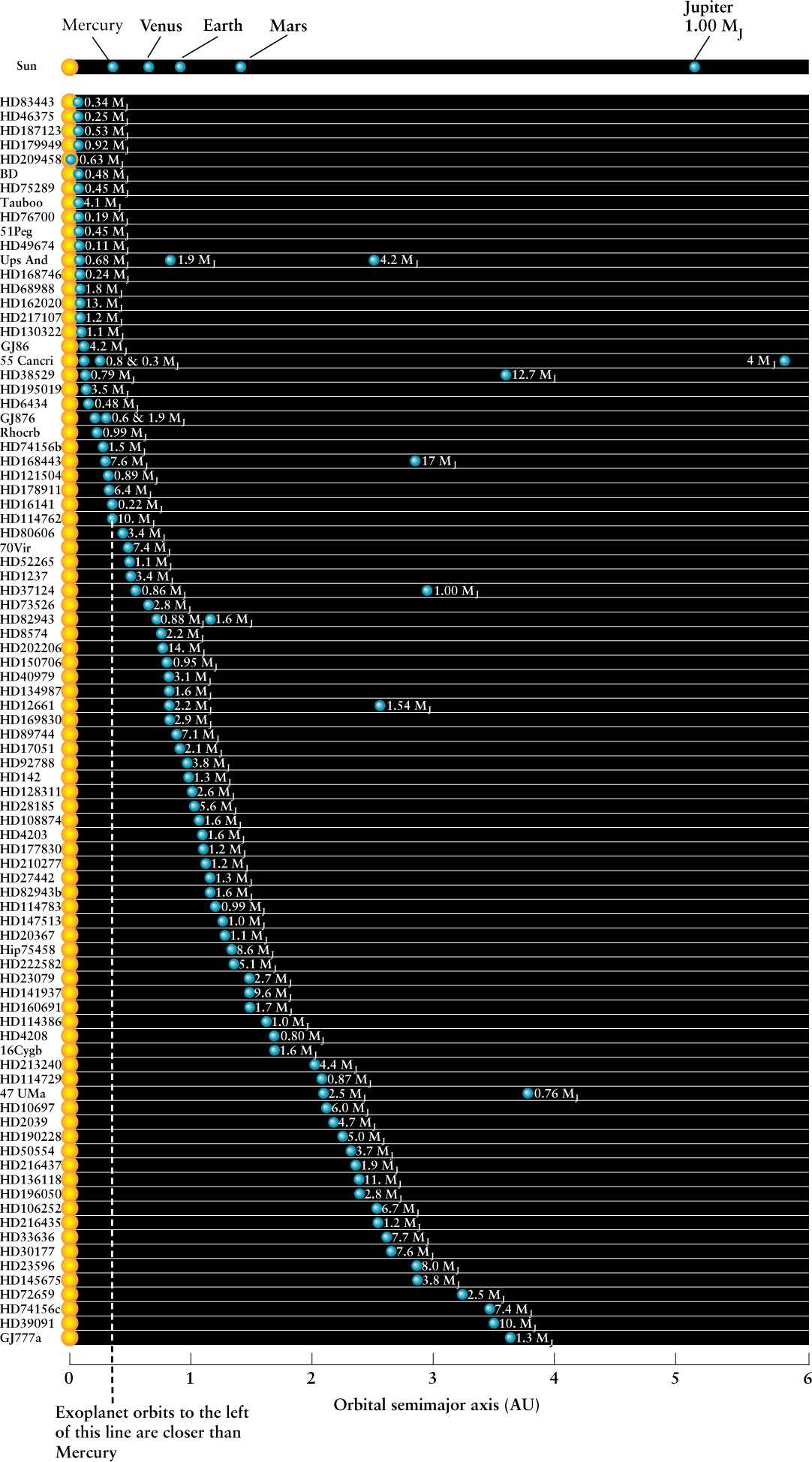
Figure 8-18: A Selection of Extrasolar Planets This figure summarizes what we know about planets orbiting a number of other stars. The star name is given at the left of each line. Each planet is shown at its average distance from its star (equal to the semimajor axis of its orbit), and some stars are found with multiple planets. The mass of each planet—actually a lower limit—is given as a multiple of Jupiter’s mass (MJ), equal to 318 Earth masses. Comparison with our own solar system (at the top of the figure) shows how closely many of these extrasolar planets orbit their stars—many planets about the size of Jupiter, orbit closer to their star than Mercury does to our Sun! Due to higher temperatures closer to the Sun, many of these exoplanets are called “hot Jupiters.” However, the radial velocity method detects large close-in planets most easily, and if all planets could be detected, the majority would be smaller and farther away.
(Adapted from the California and Carnegie Planet Search)